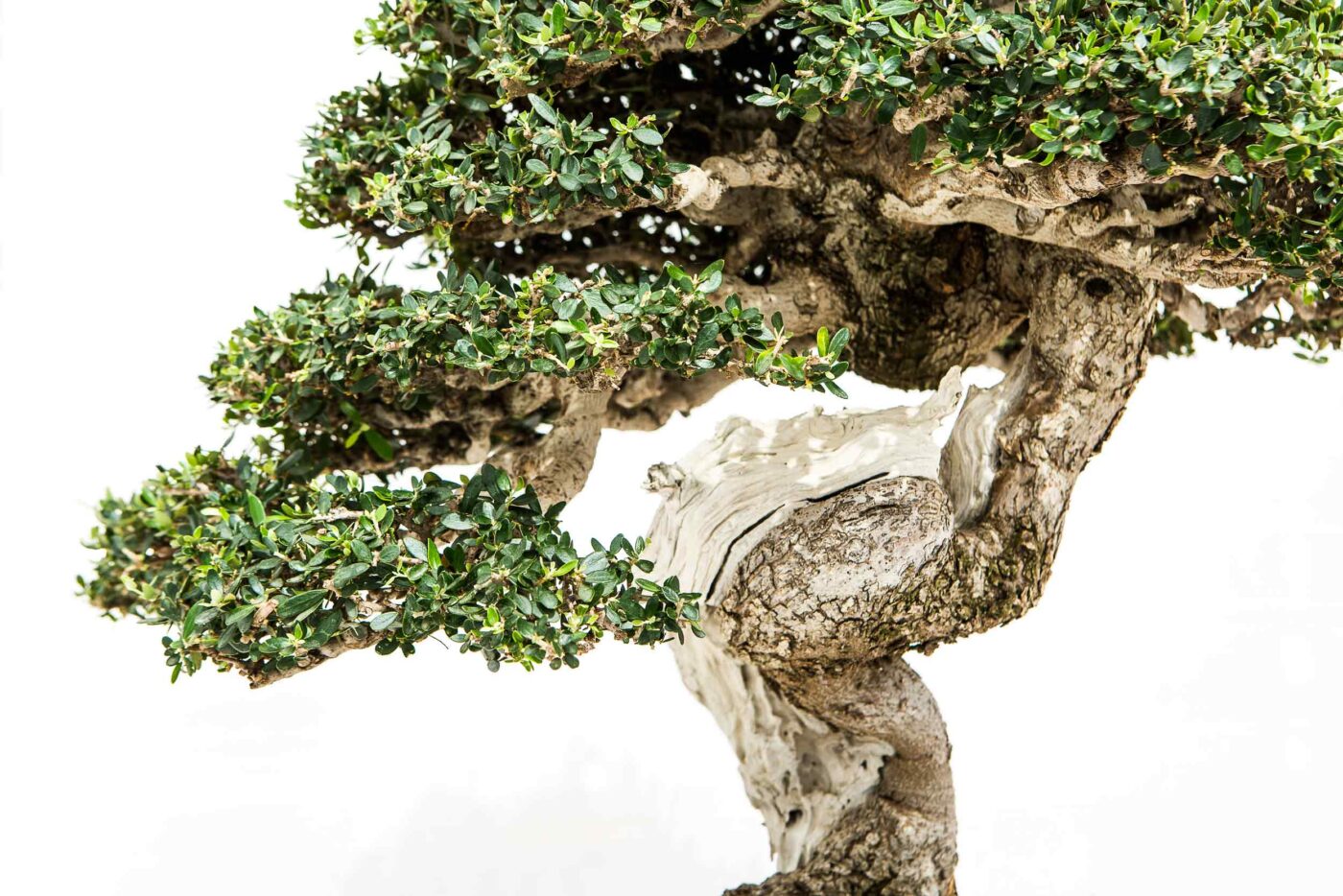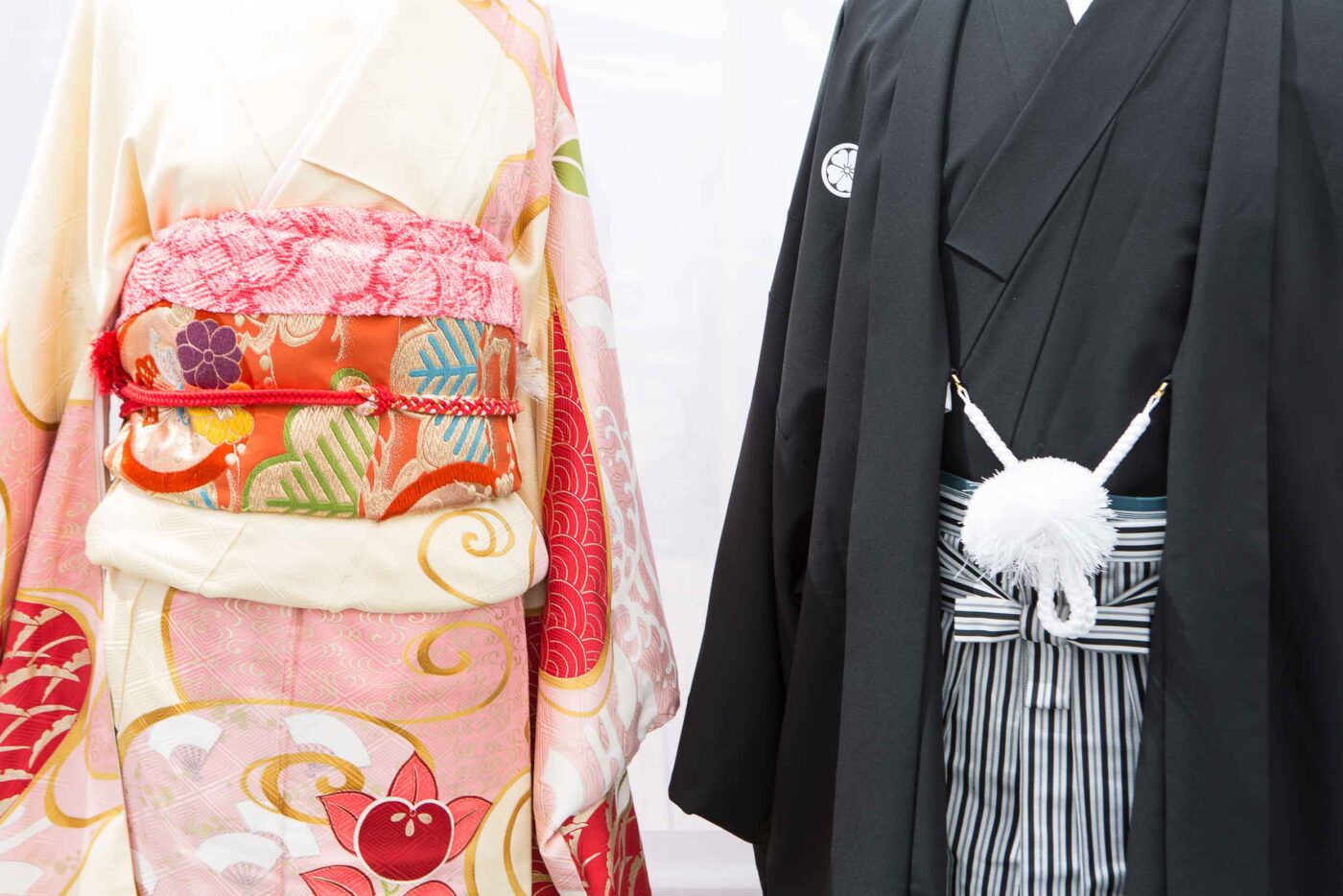Cartagenasia: when the capital of Japan is Cartagena
Summary:
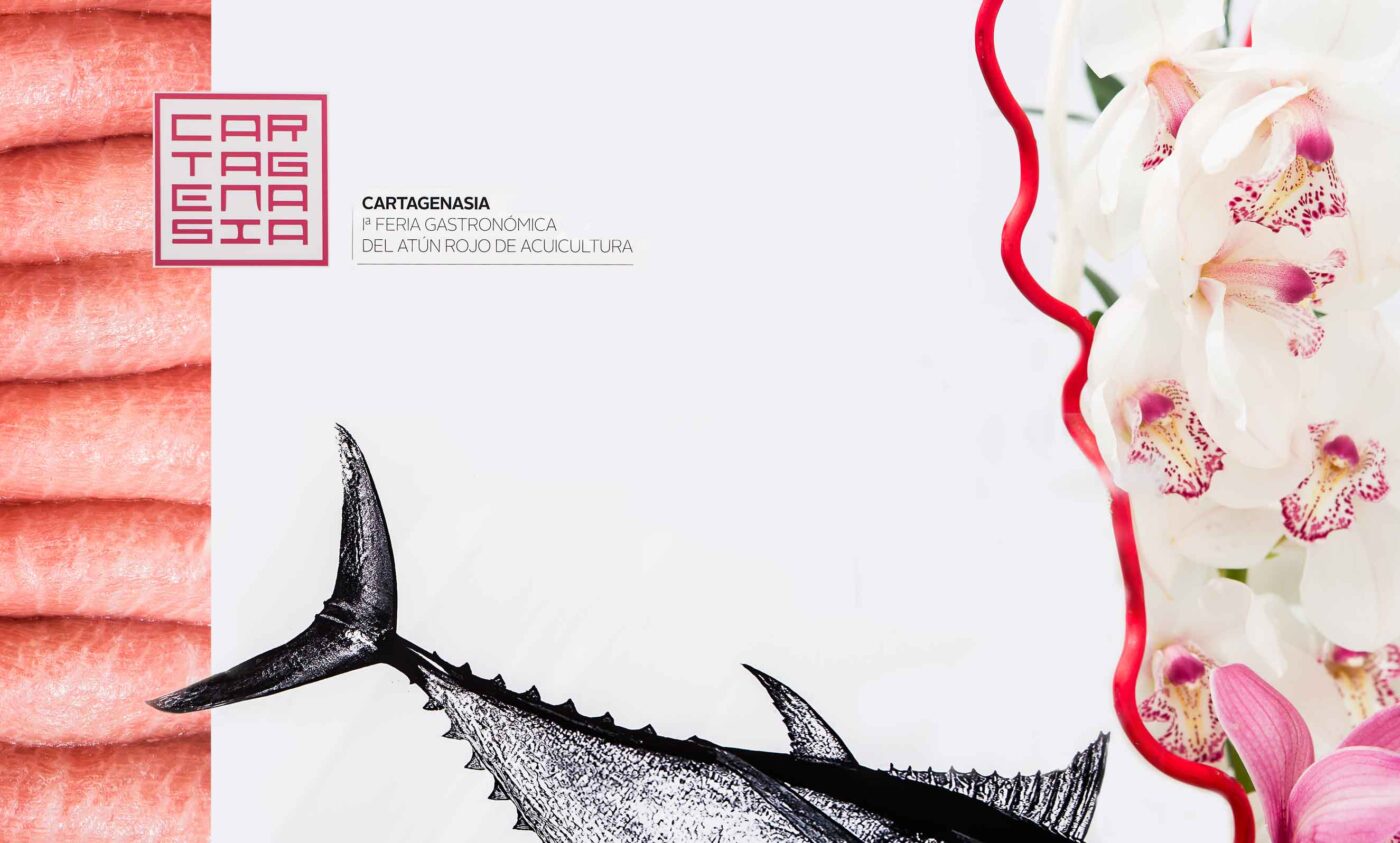
A logbook by Sensei Hiroshi Umi.
Geography can deceive. Or at least prove capricious. For the first time in history, and for just four days, Cartagena is not lapped by the waves of the Mediterranean, but the waters of more distant and exotic eastern seas. It ceases to be part of a great continental land mass, and revels in its insularity, as if part of a magical prefecture, turning all maps, coordinates and latitudes on their heads.
Because the Roman and Phoenician settlers in Cartagena have now been followed by my Japanese compatriots, the two nations twinned by a delicious and highly prized fish that has made this city in Murcia the global epicentre of tuna culture. And this whole interchange is thanks to Cartagenasia, the event recently hosted at El Batel in the port of the city where Pérez Reverte was born, courtesy of the Spanish Aquaculture Business Association, along with support from the Ministry of Agriculture, Fisheries and Food and the European Union, as well as the Japanese Embassy in Spain, the regional government, Cartagena City Council, and the delicious produce of the Ricardo Fuentes Group.
A journey to Japan with all the senses.
The reason behind the event? To place aquaculture tuna centre stage, and for understandable historical reasons, to embellish the presentation with a journey in miniature to my own homeland, for all the senses. A tempting proposition for an unrepentant gourmet and explorer like myself. And so your humble blogger wended his way there, treading the creaking timbers of the port as if they were a yellow brick road stretching as far as my hometown of Osaka, the Land of Oz where raw cuisine is the order of the day.
Under a smiling and roasting sun, equipped with a fan and an ice-cold, crystal-clear bottle, my first move was to dedicate my attention and interest to the opening addresses. As a way of focusing on the concepts behind such a praiseworthy and pleasing initiative, Noelia Arroyo, head of Cartagena City Council, got the ball rolling, emphasising that the city had been the “port of entry for many cultures, some from ancient days which nonetheless remain very much alive, such as the culture of tuna… which has opened up pathways, despite the 10,000 kilometres that separate us. Cartagenasia is a new continent offering a home to all, from those who fish to those who eat tuna, a meeting place, a bridge which I hope will last for many years“. A fine speech from the mayor.
The President of Apromar, José Carlos Rendón, pointed out that “this sea is home to the most highly prized tuna, the favourite of chefs, enjoyed by consumers on every continent… more than 50 years after Ricardo Fuentes first showed us the way. Today we remain committed to sustainable aquaculture“.
For his part and with some emotion in his words, Francisco Fuentes, president of the Ricardo Fuentes Group, main partner of the first edition of Cartagenasia and associate of APROMAR in Cartagena, addressed those present with a memory for his employees, some men and anonymous women who are going to be taking into account here in the form of a post: “Behind the bluefin tuna of Cartagena there is a great team of people. A few miles from here, many of them are working hard so that we can all enjoy every day the best bluefin tuna in the world “and added that” from this sea comes the most valued tuna, the one that chefs prefer and consumers enjoy. five continents. More than 50 years ago Ricardo Fuentes led the way. Today we continue that path by betting on sustainable aquaculture”..
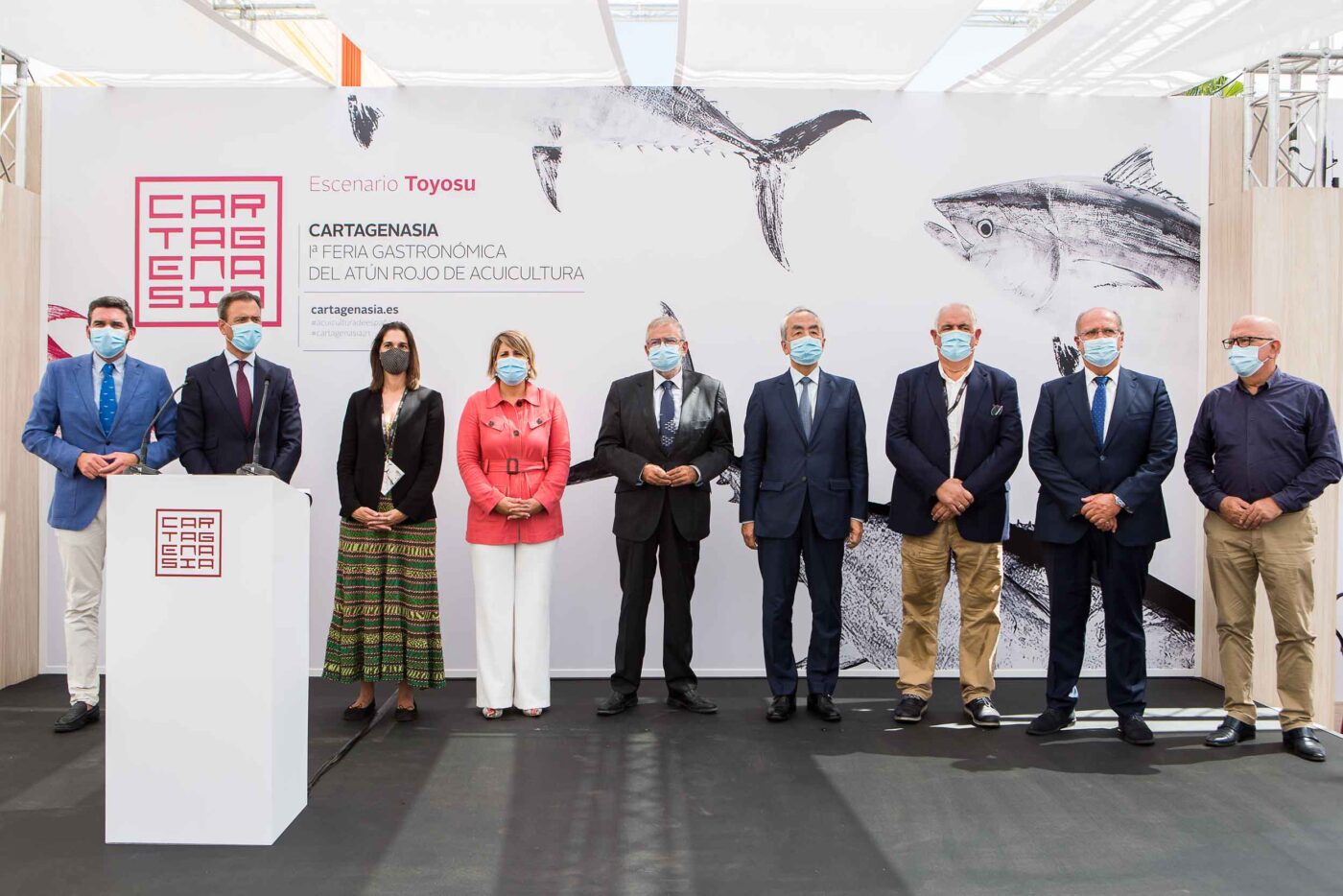
The final touch was offered by the esteemed Kenji Hiramatsu, Japanese Ambassador to Spain, who formally opened the event. His youthful years spent studying in Madrid and Salamanca have given him a highly polished and complete command of Spanish, of which he made use in mentioning that this was his second visit to “beautiful Murcia and welcoming Cartagena… Bluefin tuna is an essential ingredient for Japan and Spain, thanks to the Ricardo Fuentes Group, which exports 80% to my homeland, allowing us to enjoy tuna of great quality, as we will for many years to come, I hope“.
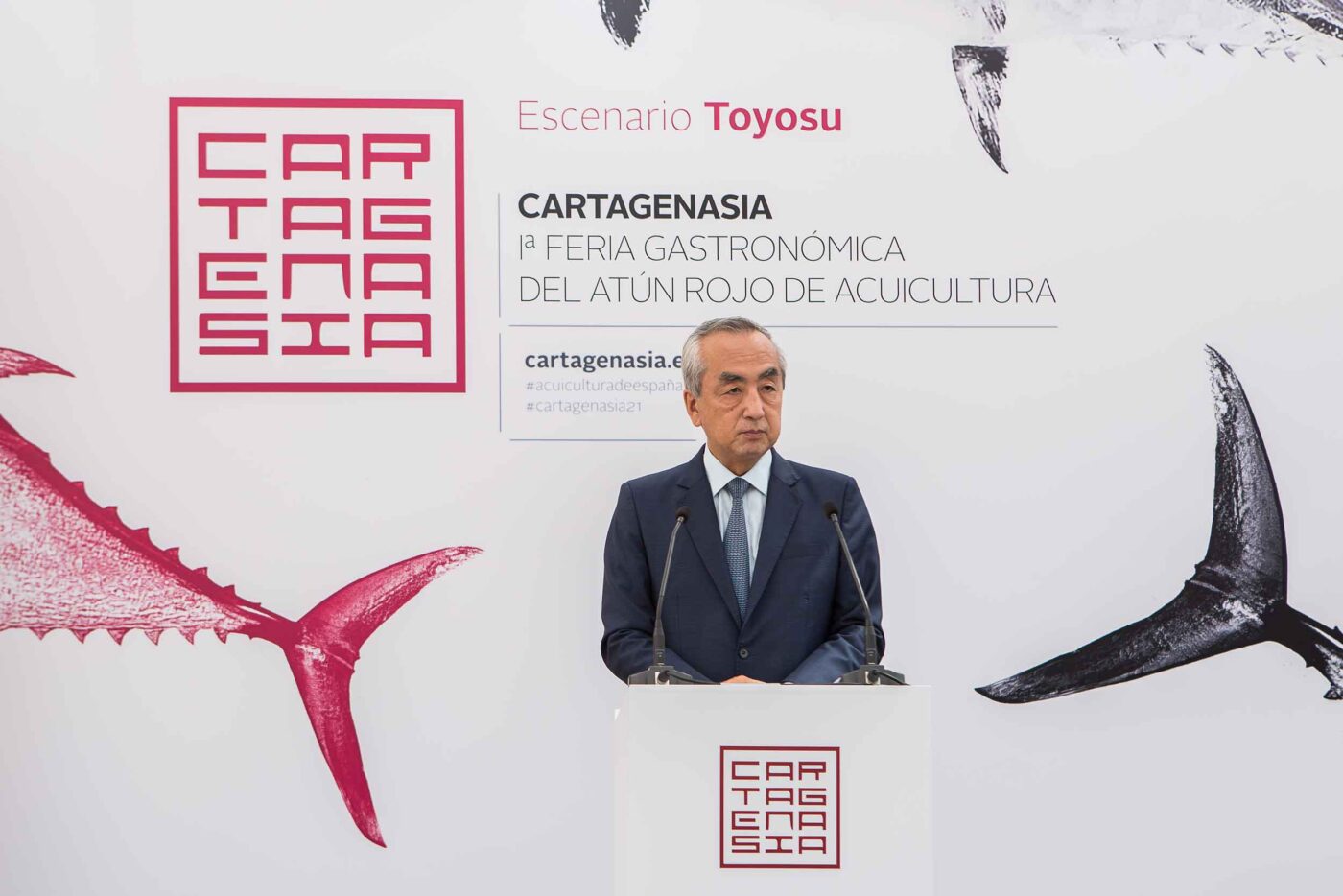
El Atún Rojo, protagonista en Cartagenasia
Because that is what it was all about. At Cartagenasia there was tuna to be had. Plenty of it. And the very finest. Deep red, and in good hands. There were tuna butchery demonstrations with gargantuan specimens on the Yosozi stage, we heard Nazario Cano (soon to be seen at Odiseo) dispel a number of myths in encouraging people to try it out in the kitchen; we were entranced by the exquisite way Pablo González handled tuna at his dreamy Cabaña in El Palmar (two Michelin stars).
Porque de eso de se trataba. En Cartagenasia ha habido atún. Mucho. Del mejor. Rojísimo y en buenas manos. Ha habido ronqueos con piezas descomunales en el escenario Yosozi, hemos escuchado a Nazario Cano –pronto en Odiseo– desmitificar leyendas para que nos acerquemos a él en cocina; nos hemos quedado absortos con el tratamiento exquisito que del atún hace Pablo González en esa Cabaña de los sueños, en El Palmar (dos estrellas Michelin).
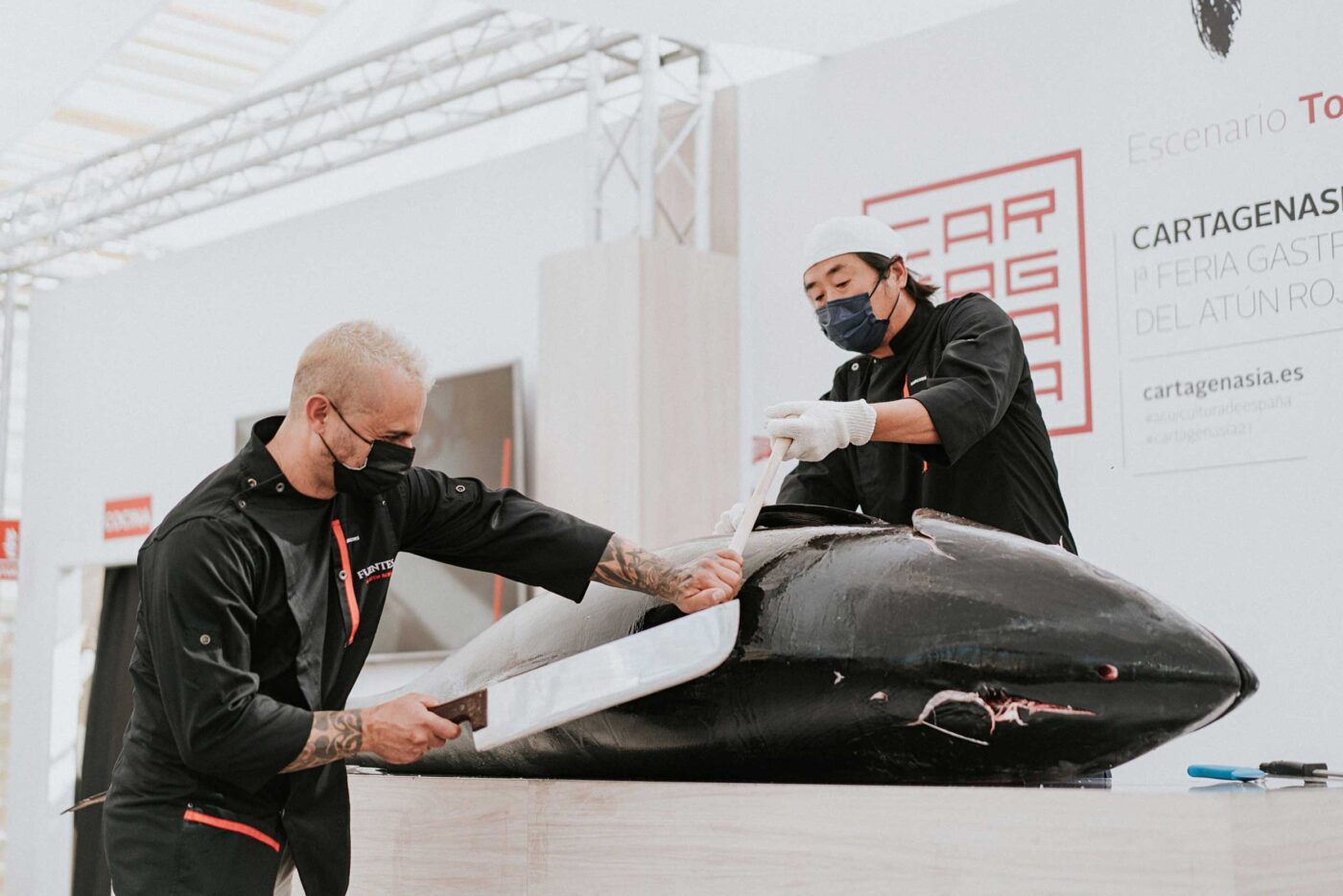
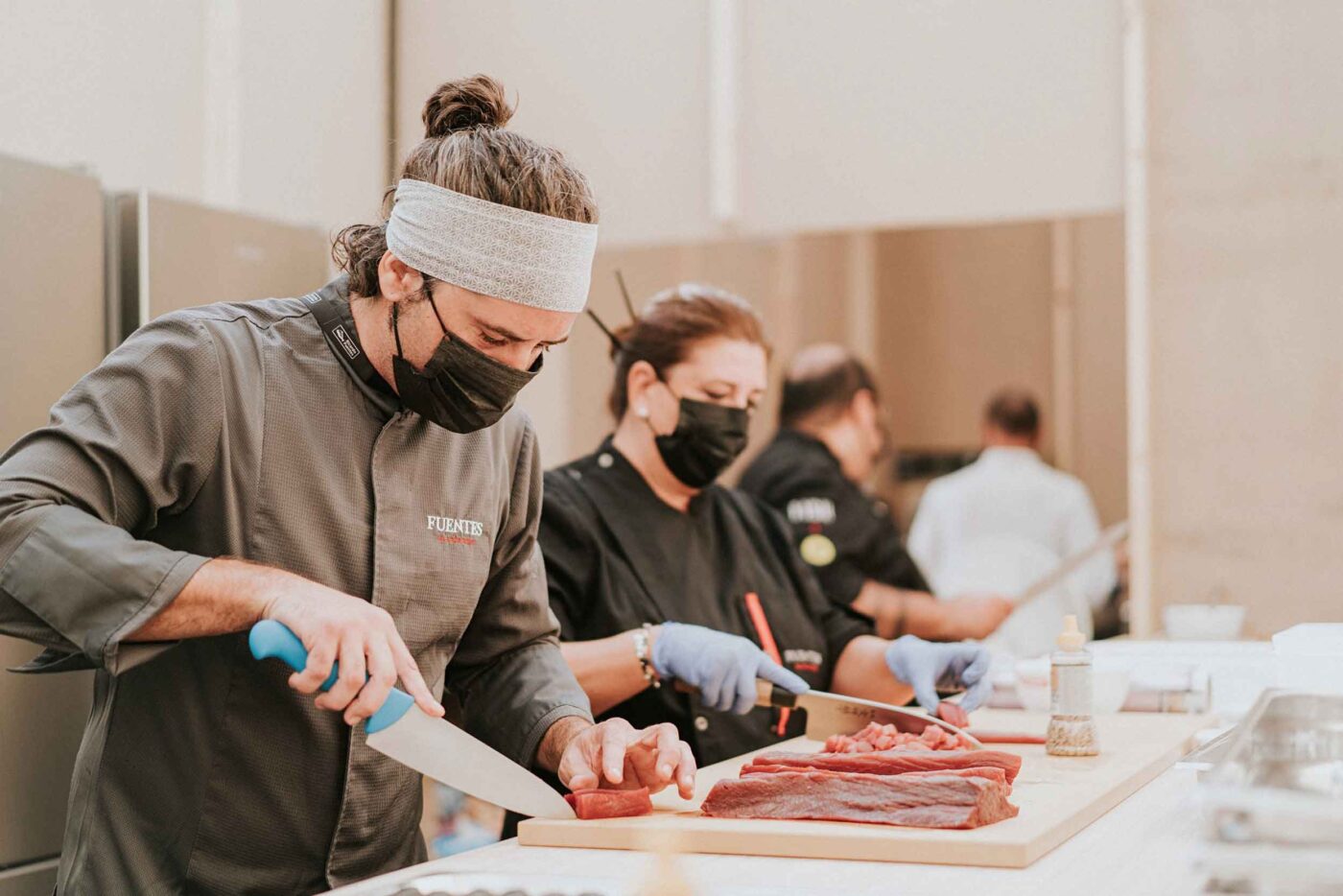
And there were makis, sushis and tatakis for all, at hugely affordable prices. A stream of people eager to take in elements of the land where I was born, which I found truly moving. From Thursday until well past dusk on Sunday there was a succession of workshops, demonstrations and exhibitions on the culture, art and cuisine of which I feel a part.
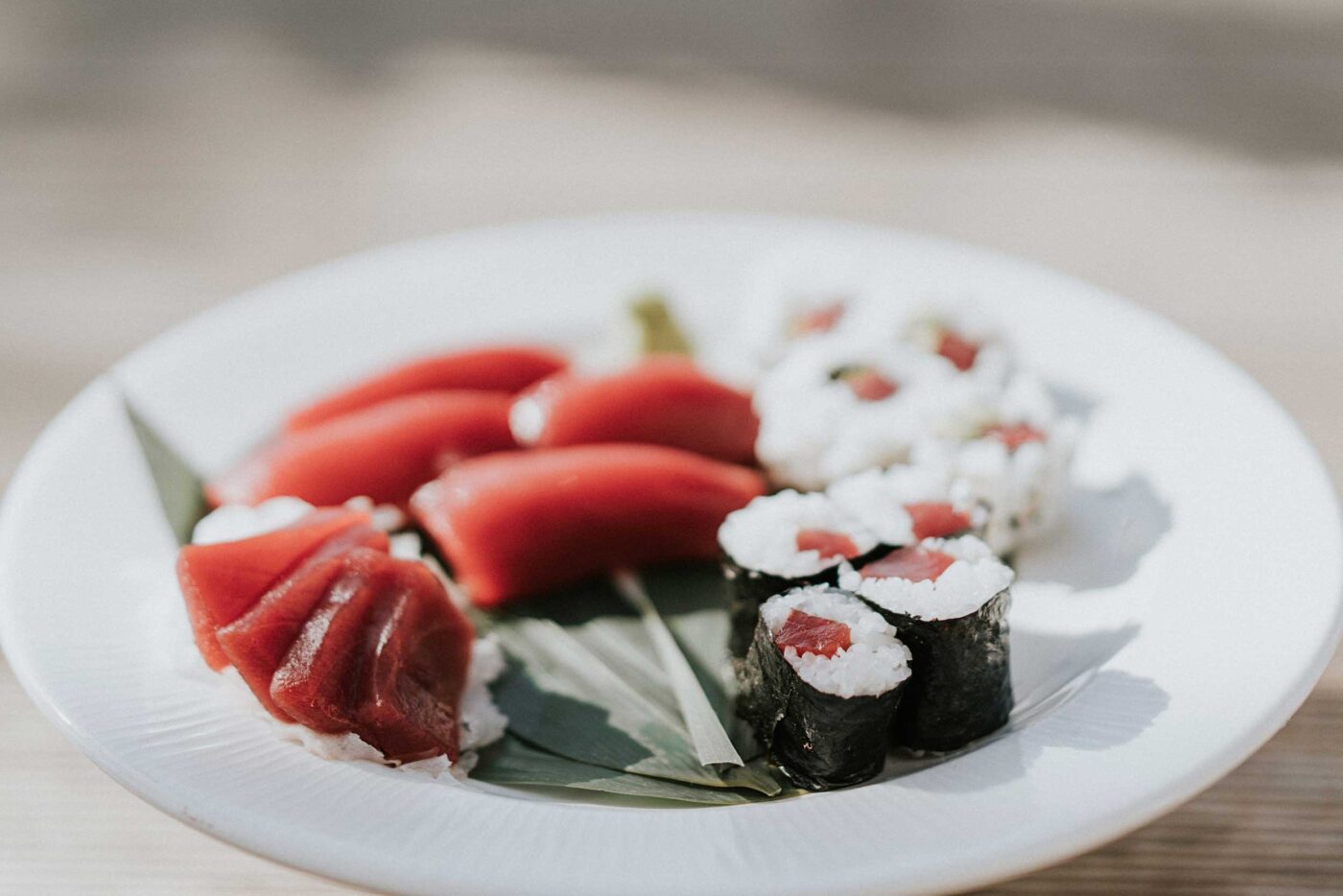
Because hundreds of locals and tourists came to enjoy the crafts, traditional costumes and sumi-e painting, calligraphy workshops (the expert Mitsuru Nagata, who lives and works in Barcelona, wrote my name in kanji as a souvenir – such an honour), ikebana (the delicate art of flower arranging that delighted passers-by and gourmands alike), origami (the art of folding paper to create figures or animals), furoshiki (wrapping objects in cloth to be transported, like a baby carried by an ethereal stork) and taiko (the imposing percussion with bachi sticks on a vertical drum, which could rouse King Kong himself from his slumbers).
And there were also traditional tales and stories told while squatting heel to haunch, photos alongside a prize-winning bonsai, conversations at every stand, with a glass of local Murcian wine in hand, marinated tataki, corvina ceviche, breath-taking tartar, sunshine inviting visitors to dive straight into the waters of the port, and a sunset you could frame…
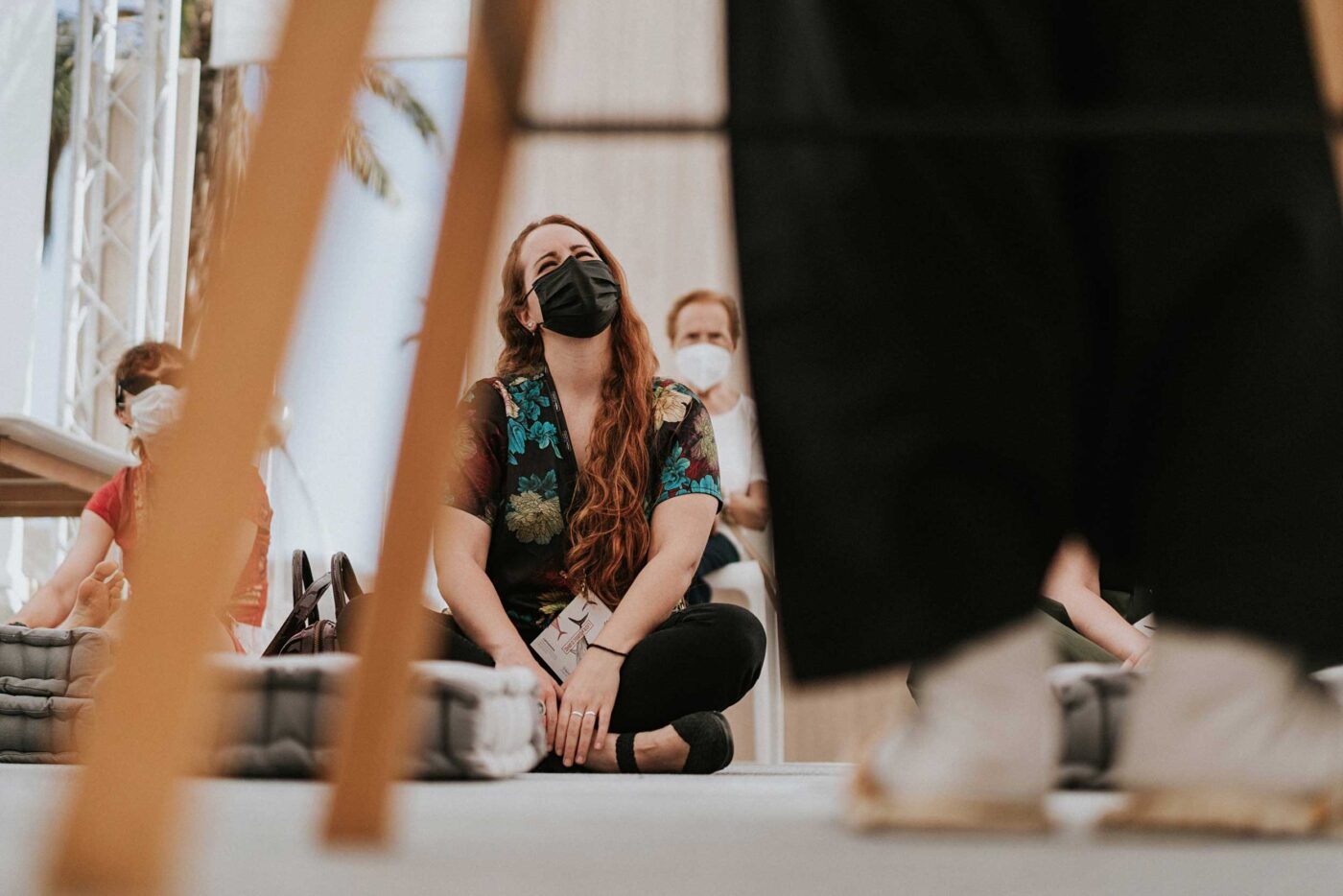
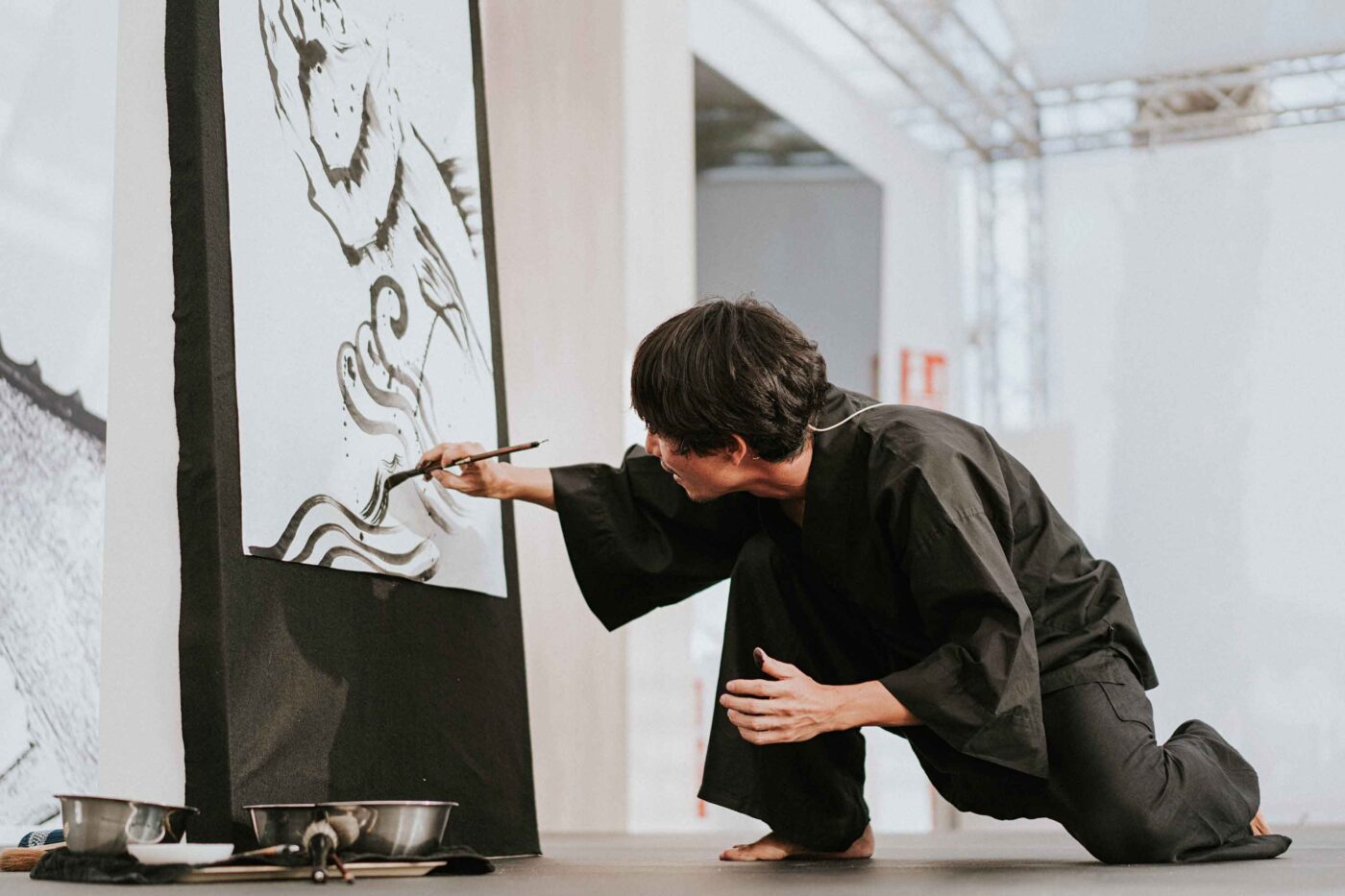
Your blogger took advantage of a break in the proceedings to head out to sea and learn about the work performed by the divers at the Fuentes fish farms in the waters of San Pedro del Pinatar, but that is a story for my next post. I would invite you to dive in. At the closing ceremony on Sunday, contented, replete and exhausted by the effort, we all agreed that the treasures of the sea are finite. And that we must protect them. As was said, heard and eaten. Long live Cartagenasia.

